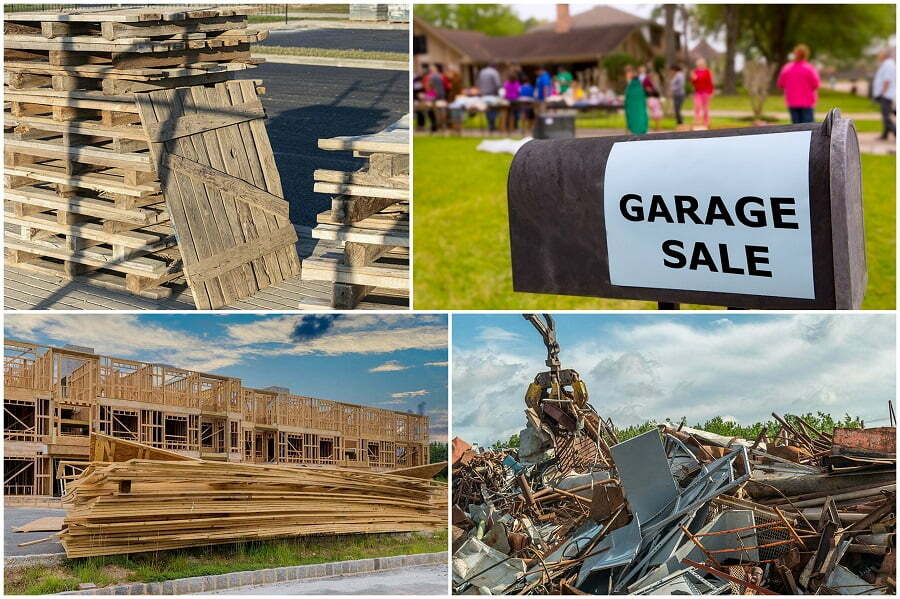Last updated on
This article offers constructive ways to recycle and reuse puzzles with missing pieces, promoting sustainability and creative utility.
Key takeaways:
- Thoroughly assess the puzzle for missing pieces.
- Contact the manufacturer for replacement pieces.
- Repurpose the puzzle for art projects.
- Donate the puzzle to schools or art programs.
- Recycle puzzle pieces responsibly based on material type.
Assess the Puzzle for Missing Pieces
Begin by thoroughly assembling the puzzle on a flat surface to identify exactly which pieces are absent. It’s important to be certain that pieces haven’t slipped under furniture or gotten mixed with other games.
If the puzzle is new, missing parts may be a manufacturing error, and most companies will replace individual pieces if contacted. If the puzzle has been used, it’s helpful to understand how many and which type of pieces are missing, as this will guide your decision on whether to keep, repurpose or discard the puzzle.
Keep in mind the age and rarity of the puzzle; vintage or collectors’ items might warrant a different approach than contemporary puzzles.
Contact Manufacturer for Replacement Pieces
Many puzzle manufacturers understand the frustration of a missing piece and may offer a replacement service. Before discarding the incomplete set, reach out to the company—check the box for contact information—some companies list customer service numbers or websites for assistance.
When contacting them, be prepared to provide the puzzle’s title, piece count, and possibly a batch number, which is often printed on the side of the box. This information helps verify the puzzle edition and increases the chances of receiving an exact match.
Some manufacturers will send a replacement piece free of charge, while others may ask for a small fee. Keep in mind, newer puzzles are more likely to have replacement pieces available, compared to those that are out of production.
Repurpose Puzzle for Art Projects
Transforming incomplete puzzles into creative artwork breathes new life into what might otherwise be considered waste. With a bit of imagination, the pieces can become mosaic tiles for decorating picture frames or serving trays. Children can also use them in craft projects to enhance their problem-solving and artistic skills.
Another innovative approach is creating unique jewelry or ornaments, highlighting the intricate designs often found on puzzle pieces. Artists may even incorporate them into mixed media canvases, using the varying shapes and images to add depth and interest to their work. The act of giving these pieces a second purpose not only prevents unnecessary disposal but also sparks creativity and innovation.
Donate to Schools or Art Programs
Recognizing the potential for creativity in every object, consider donating incomplete puzzles to local schools or art programs. Here’s why:
- Educational Enrichment: Teachers can incorporate these pieces into lesson plans that encourage problem-solving and abstract thinking. Pupils can tackle how to repurpose individual pieces into new projects, subtly teaching the value of reusing materials.
- Artistic Inspiration: Art programs often seek unconventional materials for collage, mosaic, or mixed media art. Puzzle pieces can be painted, varnished, and rearranged into striking artworks that give a second life to what might otherwise be considered trash.
- Community Engagement: Facilitating a donation drive could foster community spirit and awareness about recycling and sustainability. Engaging with local education centers heightens the social value of your donation and emphasizes resourcefulness.
- Resource for Special Needs Programs: Some educational programs for children with special needs use puzzle pieces in sensory activities or rewards systems. Each donation could contribute to a supportive learning environment.
When contemplating such contributions, ensure to communicate with the institutions first. They can provide insight into their needs and restrictions, ensuring your donation will be put to good use.
Recycle Puzzle Pieces Responsibly
When it comes to recycling puzzle pieces, the first step is to identify which materials were used in their manufacture. Many puzzles are made of cardboard while others might incorporate plastic or wood. Here’s how to handle each type for recycling:
Cardboard: Check if your local recycling program accepts mixed paper. If so, you can place cardboard puzzle pieces in the recycling bin. Ensure they’re free from contaminants like food residue or oil.
Plastic: Plastic pieces may be recyclable, depending on the type of plastic used. Look for recycling symbols and numbers on the pieces to sort them correctly. Unfortunately, not all curbside programs accept all types of plastic, so check with your waste management provider.
Wood: Wood puzzle pieces are less common and typically not recyclable through curbside programs. However, they may be compostable if they’re untreated. Consider adding them to your compost heap or find a local facility that accepts wood waste.
Remember to separate any non-recyclable components such as metallic elements or electronic parts before recycling. In some cases, it might be necessary to discard small pieces that don’t meet the specifications of recycling programs, especially if they pose a risk to recycling machinery. Always prioritize the safety and efficiency of the recycling processes.
FAQ
Can you donate puzzles with missing pieces?
Yes, you can donate puzzles with missing pieces, but remember to clearly mark on the box that some pieces are absent.
What to do if your puzzle has missing pieces?
If your puzzle has missing pieces, conduct a meticulous search in areas where you’ve opened, assembled, or stored the puzzle, including the spaces under other items, in open trash bins, or between other household objects.
What can I do with old puzzles with missing pieces?
Old puzzles with missing pieces can be creatively repurposed into Christmas wreaths and baubles, ornaments, photo frames, or even table tops.
What can I do with unwanted jigsaw puzzles?
Unwanted jigsaw puzzles can be donated to various entities like charity shops, residential homes, libraries, or social clubs, sold online, or composted if the set is incomplete and primarily composed of eco-friendly materials such as cardboard and paper.
How can you repurpose puzzles with missing pieces for creative projects?
Puzzles with missing pieces can be repurposed for creative projects like creating wall arts, collage frames, drink coasters, or jewelry, thereby reducing waste and enhancing creativity.
Are missing puzzle pieces recyclable and how should they be handled?
No, missing puzzle pieces are not recyclable and should be discarded in general waste, or better yet, upcycled in creative endeavors to minimize waste.
Are there organizations that specifically accept incomplete puzzles?
Yes, various organizations like Goodwill and Salvation Army accept incomplete puzzles for recycling or repurposing.
Related reading:
Table of Contents

